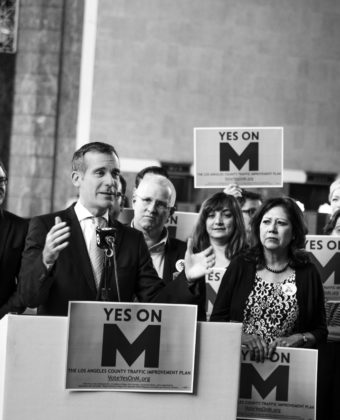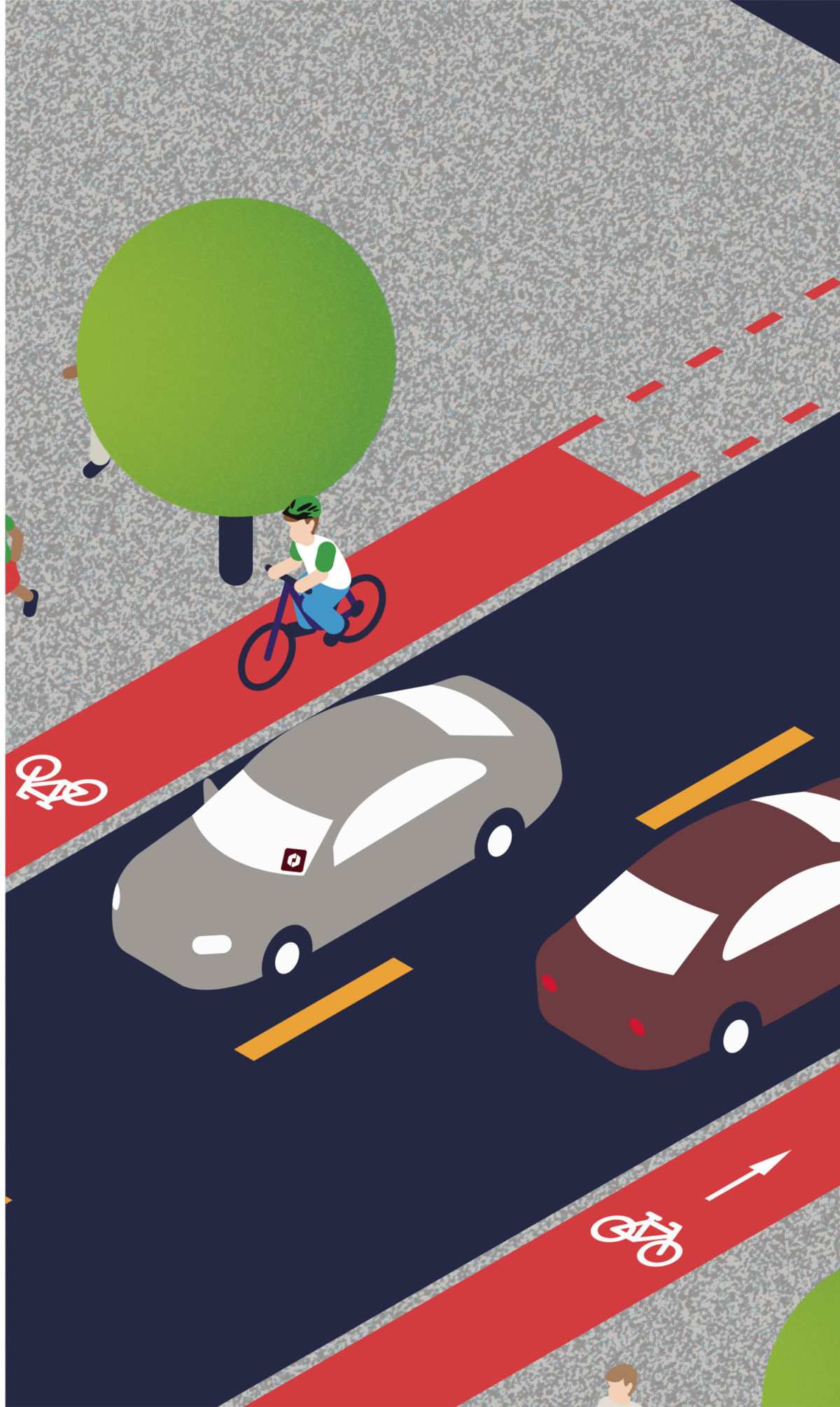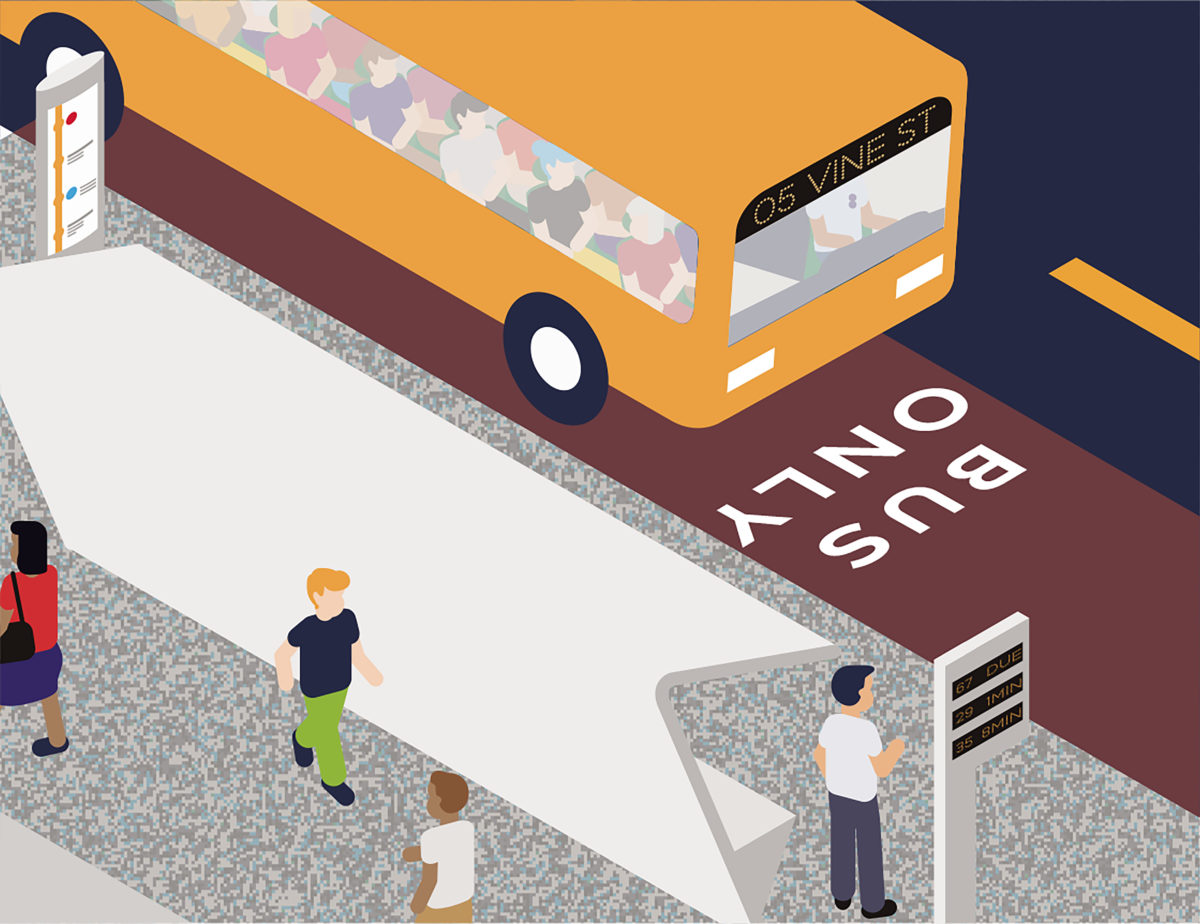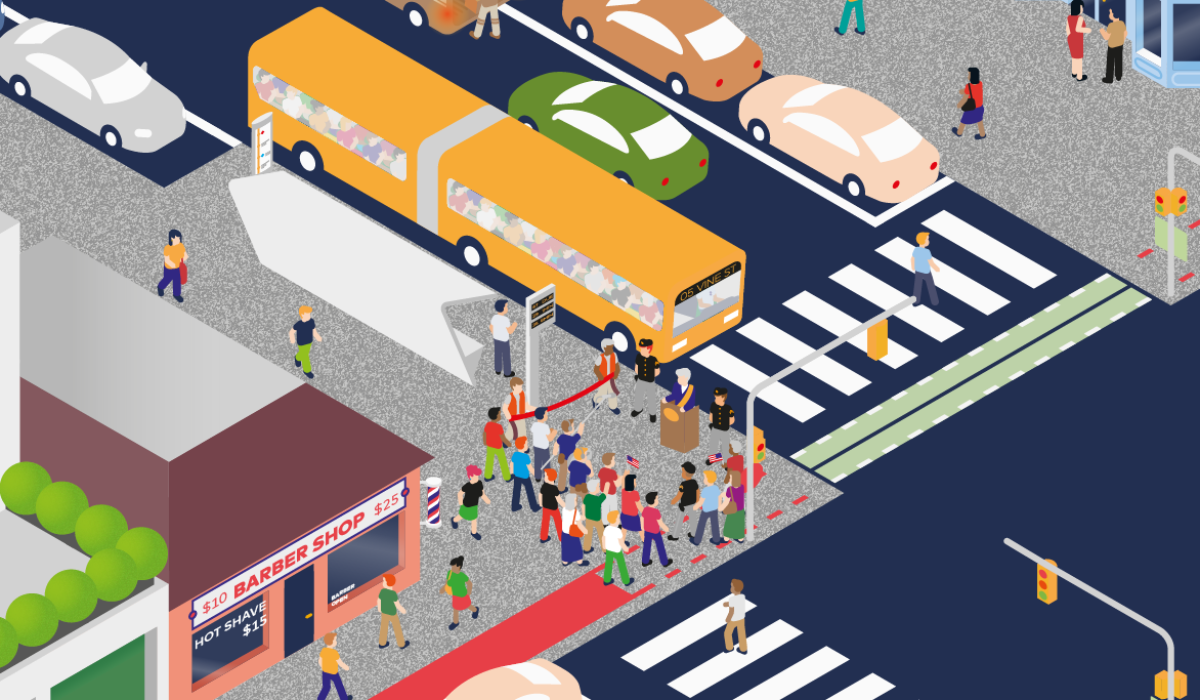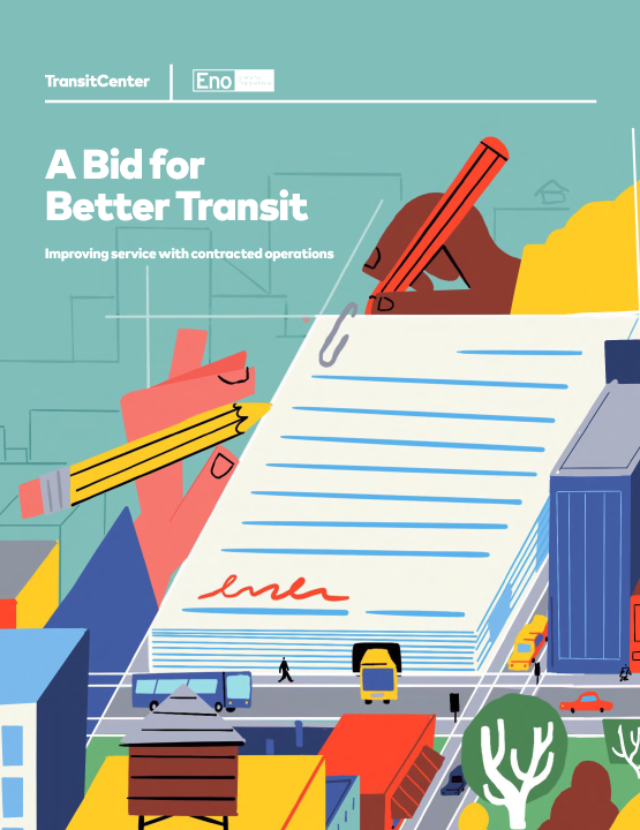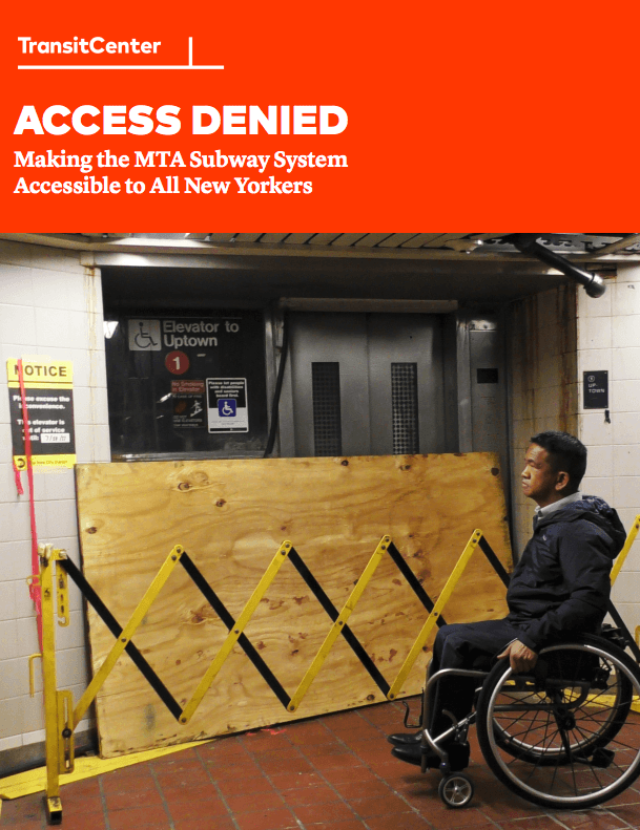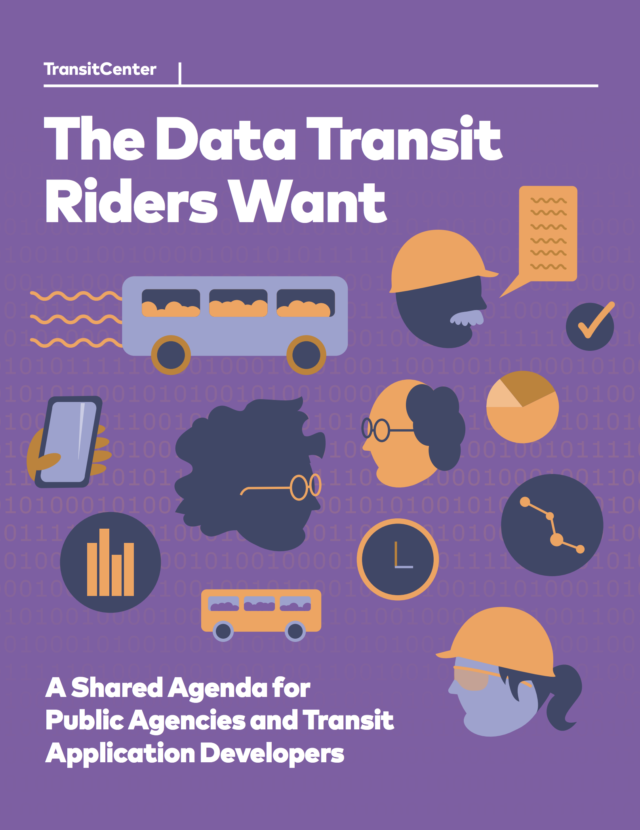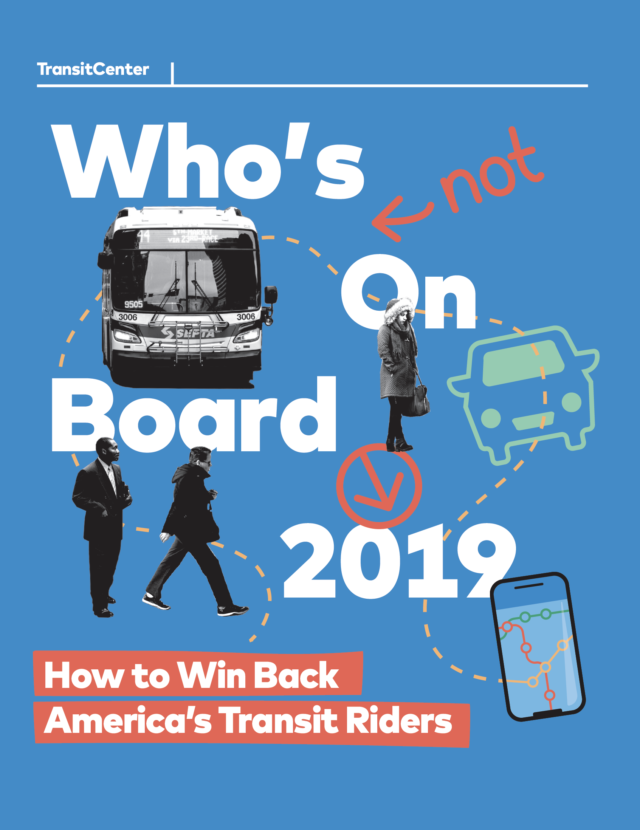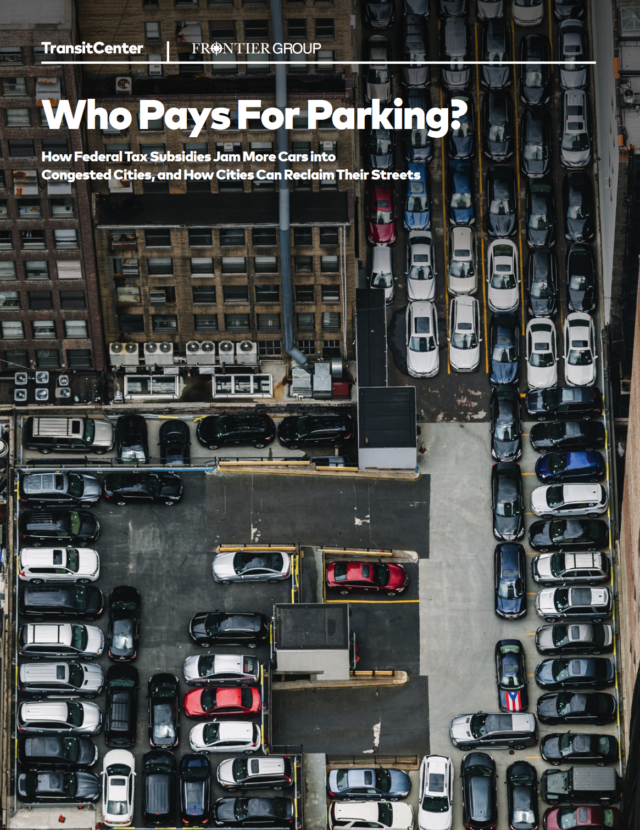You may not run transit, but you can lead
Useful bus and train service supports development and economic growth, reduces the public health and environmental harms of transportation, and provides an affordable choice so that residents can access jobs and services without the expense of a private vehicle. Although most cities do not control their public transit agencies, they play a determining role in whether transit is effective because they govern the streets and they can influence agency actions via negotiation or though appointees to the transit agency board.
In order to attract riders who are willing to use transit for multiple purposes, transit must provide access to many destinations in a reasonable amount of time.
Frequency is crucial; when a bus or train runs at least every 10 to 15 minutes, potential riders can “show up and go” instead of needing to plan around a schedule. For a transit system, there is an inherent trade-off between running more frequent service on a smaller number of routes, and running less frequent service on a larger number of routes that cover more area. Running frequent service in walkable corridors builds ridership and makes transit more financially productive, while a “coverage” model extends service to more places but makes that service significantly less useful for most riders.
Also important is reducing travel time so that transit is competitive with alternatives. Opinion research confirms that transit riders value improvements to frequency and travel time over other improvements, and that the majority of transit riders walk to the stop (even if they own cars).
Other factors—like the quality of marketing or attractiveness of vehicles—are less important than these fundamentals.
- Prioritize transit on the street with transit-only lanes, sidewalk extensions, traffic signal changes, and other design features. (See “Design the street to move more people” sheet)
- Use zoning to concentrate development around transit corridors and ensure new development is comfortable to walk to and from. (See the “Design walkable, transit-friendly neighborhoods” sheet)
- Coordinate with transit agencies to install and improve shelters on heavily used routes. A bus shelter is not a luxury; it provides a basic level of comfort and dignity to people waiting for transit.
- Support efforts to provide more frequent service in walkable corridors.
- Support efforts to speed up boarding—such as prepaid fares—and redesigns of bus routes that make them more direct and eliminate time-consuming deviations.
- Urge that new transit lines be built to connect walkable neighborhoods, not in corridors that are difficult to walk to (such as in the middle of a highway). Push for transit station design that is welcoming to the pedestrian, not suburban-style park-and-rides.
- New York City’s Department of Transportation has forged a strong relationship with the state-run Metropolitan Transportation Authority to create a pipeline of “Select Bus Service” projects that combine improved bus service (prepaid fares, limited stops, and high-capacity buses) with street and signal improvements that speed up bus service.
- Similarly, Seattle has worked closely with King County Metro to create a series of “RapidRide” corridors that combine frequent bus service and street improvements. In 2014, the city also asked voters to raise taxes to increase bus service—and won—and directed that money to increased KC Metro service on busy routes.
Cities that appoint members to a transit agency’s board have important leverage over the agency’s policies. When a city’s appointees have a strong technical understanding of how transit works, they can push for wide-ranging improvements.
For example, Houston METRO board member Christof Spieler (an appointee of Houston Mayor Annise Parker and Mayor Sylvester Turner) was a bus and rail rider who frequently wrote about transit before being selected as a board member. His understanding of the importance of frequency led him to champion a restructuring of the agency’s bus service that emphasized a high-frequency grid of service and better connections to rail stations and job centers outside of the historic downtown.
Spieler’s knowledge of transit principles helped him convince other board members to support this “system reimagining,” which brought frequent transit within walking distance of an additional half-million residents, increased ridership, and resulted in METRO receiving national recognition.
Who’s On Board 2016: This TransitCenter report draws on survey data and focus groups from regions around the country to identify how people use transit and what makes transit useful to people. The report underscores the importance of providing service that is frequent, fast, and easy to access on foot.
Transit Street Design Guide: Published by the National Association of City Transportation Officials, this guide summarizes best practices and principles for transit network and route design, fare collection and boarding practices, and more, at a high level appropriate for municipal officials. It is an essential read for city transportation staff who want to understand how to use street design to improve public transit.
AllTransit — This online resource from the Center for Neighborhood Technology measures access to transit for every U.S. region with at least 100,000 residents. It shows local leaders where transit works best in their communities.
Partner with employers
Transit and transportation have a major impact on businesses’ customer and worker base, and employers care deeply about the issue. Smart Growth America’s Core Values report—based on research on nearly 500 companies that moved to downtown, transit-oriented neighborhoods between 2010 and 2015—found that moving downtown helped businesses attract talented workers, build company culture, be closer to customers and partners, and become better corporate citizens.
Helping to advocate for a transportation vision.
Business leaders can be crucial members of a coalition to support transit and walkable neighborhoods. Business organizations and individual employers have helped make the case for investments in transit in Indianapolis, Denver, Charlotte, and many other cities. (See our “Work with civic leaders” sheet for more.)
Making it easier for employees to get to work without a car.
Large employers like medical centers and universities, which have thousands of employees converging on a single point at regular times, have a huge stake in transportation improvements that get their workforce to and from the job. They’re often willing to provide free or reduced transit passes or preferential carpool parking in order to minimize the valuable real estate they would otherwise have to devote to storing employees’ cars.
Employers can also band together through transportation management associations/organizations (TMAs/TMOs). Somewhat like a business improvement district, these groups are at least partly funded by member dues and can provide:
- Transportation information (for example, by helping individual employees learn about how to commute using transit);
- Privately operated or contracted shuttle service;
- Programs that encourage alternatives to driving alone.
The most effective TMAs go beyond service provision and help advocate for transportation changes in their neighborhoods. The 128 Business Council in suburban Boston helps local governments plan pedestrian improvements, while Go Lloyd in Portland, Oregon, has helped make the case for parking changes and transit increases.
Work with (or around) state government
Although there are exceptions, state departments of transportation generally take a more car-focused approach to mobility than city governments. That’s because their historical role has been designing, building, and maintaining the interstate highway system. The most common area of contention lies around road design.
This is especially true if they are designed and measured using performance standards developed for major highways. These include wide lanes (11 or 12 feet) that encourage speed, “clear zones” (the removal of trees alongside the road), and the use of performance measures that prioritize private automobiles.
It doesn’t have to be this way. State departments of transportation in New Jersey and Maryland, for example, have developed flexible design policies that engineers can cite to justify “Main Street”-style designs in cities and towns. Other states have adopted the guidelines in the Urban Street Design Guide published by the National Association of City Transportation Officials. Others have adopted “complete streets” policies that require them to consider accommodations for biking, walking, and transit. If your state isn’t living up to its own policies, you can use that as a pressure point.
State laws or standards sometimes preclude innovative design (see “Design streets to move more people”). In 2015, leaders in New Haven, Connecticut, realized they could not build a two-way protected bike lane because an old state law required cyclists to ride “as near to the right side of the roadway as practicable.” City officials eventually convinced the state legislature to change the law.
In some cases, state legislators have passed punitive measures aimed at specific projects. In 2014 the Tennessee Senate passed a bill outlawing certain types of transit-only lanes in two Nashville-area counties at a time when Nashville leaders were planning a bus rapid transit project. The bill avoided becoming law only after furious advocacy from business and other leaders in Nashville.
Federal transportation funding is passed through state departments of transportation as well as metropolitan planning organizations and transit agencies. Even though this funding goes to specific programs defined by federal formulas, states have substantial flexibility to move funds from one program to another. This means federal transportation funds can be used for a wide variety of pedestrian, transit, and bicycle projects.
On the other hand, many states restrict the use of the state gas tax to highways. Urban leaders should work to roll back these restrictions. Increasingly, municipalities are also turning to local sales or property tax measures to fund transit investments; around 70% of these pass annually, according to the Center for Transportation Excellence.
Know your rights Be skeptical if state bureaucrats claim that federal transportation funds can’t be used for a transit street, bike lane, or pedestrian safety project. Federal transportation funds are flexible, and the federal government has endorsed many street-design measures that support transit and walking.
Raise your own funds Consider using local sales or property taxes to support transit investment; partner with businesses and others to supplement some transportation efforts (see “Partner with employers”).
Use persuasion and politics If state government is standing in the way of solutions your community needs, the answer to your problem is often political, not technical. If a problem is occurring at the staff level——for example, state engineers who insist on applying highway standards to your main street——you may be able to convince leaders at the agency to take a more flexible approach.
On the other hand, if the problem is opposition from agency leadership or even state politicians, you may need to do some coalition building. Work with civic leaders to make a fuss and support your case (see “Work with civic leaders”). If business leaders or community members back your project, it becomes harder for the state to stand in the way.
Federal Highway Administration Memorandum on Bicycle and Pedestrian Facility Design Flexibility and Questions & Answers about Design Flexibility for Pedestrian and Bicycle Facilities: These 2013 and 2014 memos from the FHWA officially endorse the use of the Urban Street Design Guide and Urban Bikeway Design Guide by the National Association of City Transportation Officials and Designing Walkable Urban Thoroughfares by the Institute of Transportation Engineers.
When Main Street is a state highway: This 2013 presentation by the Sonoran Institute outlines, with many visuals, the challenges that can arise when a town’s Main Street is a state highway.
The Life and Death of Urban Highways: This report by the Institute for Transportation and Development Policy and EMBARQ outlines several cases in the US and elsewhere where communities have successfully convinced state departments of transportation to remove large highways and replace them with human-scale boulevards.
Center for Transportation Excellence: This organization is the primary resource for learning about successful local transit ballot referenda.
Transportation Innovations That Save States Money and Attract Talent: This briefing book by Transportation for America outlines more than a dozen transportation policies that state governments can carry out to save money and attract talented workers. Among them are recommendations that states invest in transit, walkable places, and main streets. Local leaders can use this guide to make the case to governors and state DOT directors that transit-first streets make economic sense.
Falling Forward: A guide to the FAST Act: This report by Transportation for America about the FAST Act, the most recent federal transportation law, is a useful resource outlining what local leaders can and cannot do with federal funds.
Work with civic leaders
Civic organizations—the independent think tanks, community groups, and advocates in your city—can play a valuable role in developing and delivering on your transportation agenda. Civic leaders have more freedom than elected officials to explore and launch new ideas. They can be a conduit for new ways of communicating ideas, whether yours or theirs.
Strong, well-organized transportation advocates exist in some cities. Many other civic groups don’t think of themselves as transportation-related organizations but have realized that transportation innovation is key to their other objectives. For example, a business association that spends most of its time promoting its members’ retail businesses may recognize that better transit is one means of drawing new customers.
The relationship between civic groups and elected officials is a dynamic one, with some groups likely to support transportation reforms, others inclined to oppose them, and many that will work with you on some issues but not on others.
Ideally, you can cultivate a coalition of civic leaders who will support the city when it undertakes difficult initiatives but then push the city to do even more. Transportation changes, like bus-only lanes and changes to parking, can lead to pushback. If constituents begin lobbying the city to maintain the status quo, it becomes essential for other citizens and civic leaders to continue demanding more change, giving your staff the political space to keep changing the transportation system.
Different types of civic organizations play different roles, but all can be useful in building your agenda and maintaining support for it. Examples are:
Research organizations, sometimes affiliated with universities or sometimes independent nonprofits, specialize in collecting evidence, developing proposed policies, and publishing reports that inform and influence local leaders. Examples include the Allegheny Conference on Community Development in Pittsburgh and the Kinder Institute for Urban Research at Rice University in Houston, which studies residents’ preferences about transportation, among other issues.
Membership-based advocacy groups, such as those that represent transit riders or bicyclists, can turn people out to testify at public hearings, collect signatures, and mobilize interested citizens in other ways. Examples include Ride New Orleans, Active Transportation Alliance in Chicago, and Riders Alliance in New York City.
Business organizations often understand the link between better transportation and economic growth. The Downtown Denver Partnership championed a large expansion of light rail and changes to the pedestrian environment. The Indy Chamber has been one of the foremost advocates for expanding bus service in Indianapolis (and helped to pass a transit tax measure in 2016). At a smaller scale, merchants’ associations and business improvement districts often work on transportation, parking, and streetscape improvements at a local level.
The more diverse the civic ecosystem’s organizations and skills, the greater the likelihood that a new idea launched into the public sphere will evolve into a political mandate.
If there are few civic groups working on transportation in your city, you may need to work with local foundations, community groups, and/or business leaders to change that: You can convince existing organizations that transportation is relevant to their work, or you can help to create new civic groups.
The MARTA Army, for example, is a new volunteer organization working to improve transit stops in Atlanta. RVA Rapid Transit is a 3-year-old pro-transit group that has helped shape changes to bus service in Richmond, Virginia, and grew out of faith-based organizing efforts. Local and national foundations (disclosure: including TransitCenter) have provided support to help both organizations grow.
Chicago has a diverse array of transportation groups, including the Metropolitan Planning Council (a planning organization), Center for Neighborhood Technology (a think tank), and Active Transportation Alliance (a membership group working for transit, biking, and walking improvements). Before the 2011 mayoral election, these and other groups released a “Sustainable Transportation Platform” with ten recommendations that would make it safer and easier to take transit, walk, and bike in the city. Incoming mayor Rahm Emanuel folded many of the recommendations into his transition plan, which ultimately informed the Chicago Department of Transportation’s official action plan and led to new bus, bicycle, and pedestrian improvements.
In Denver, business and transportation groups have combined forces to support expanded transit and more walkable, bikeable streets. In the late 1990s and early 2000s, the Transit Alliance (a business-backed nonprofit) helped build public support for light-rail expansion. Beginning in 2005, the Downtown Denver Partnership (a business group representing downtown employers) helped set the vision for a more walkable downtown. More recently, membership groups like BikeDenver and WalkDenver have raised awareness of the need to improve walking, biking, and transit in core neighborhoods. This “civic ecosystem” has provided political cover to city leaders working to change transportation—and put pressure on them when change slows down.
To learn more about these and other examples of civic leaders and elected officials working to win transportation change, read TransitCenter’s 2015 report, A People’s History of Recent Urban Transportation Innovation.
Download the report now (4.2MB, PDF)
TransitCenter’s 2015 report A People’s History of Recent Urban Transportation Innovation demonstrated that civic leaders are often instrumental in introducing new ideas to the political mainstream and then providing the support needed for city leaders to implement those ideas.
